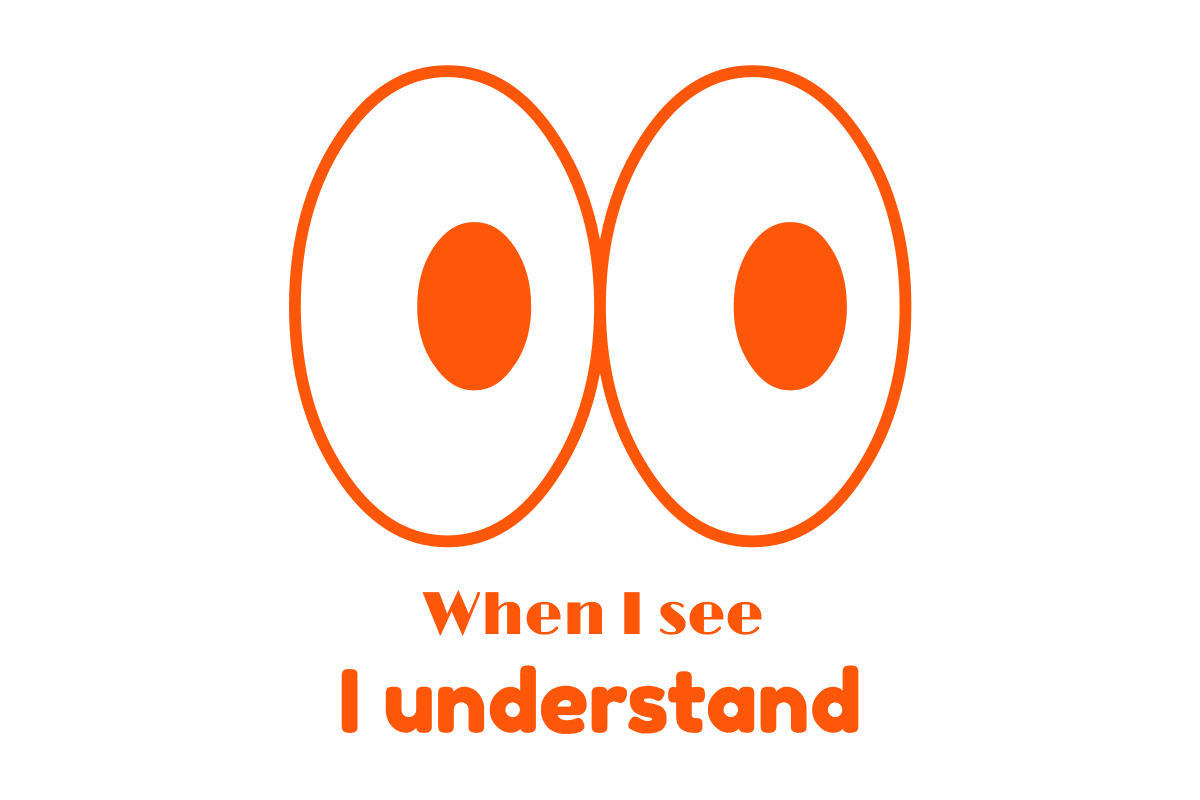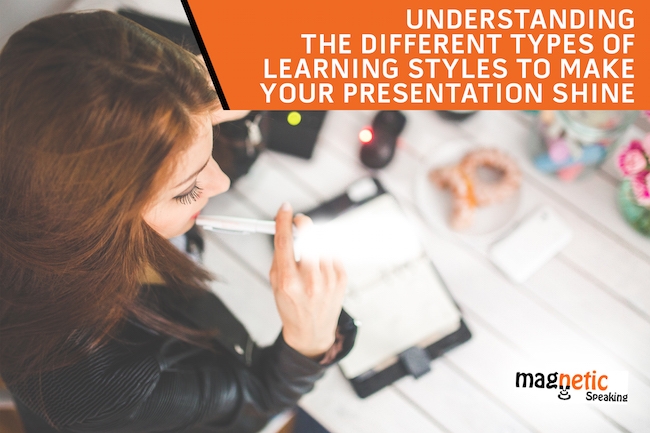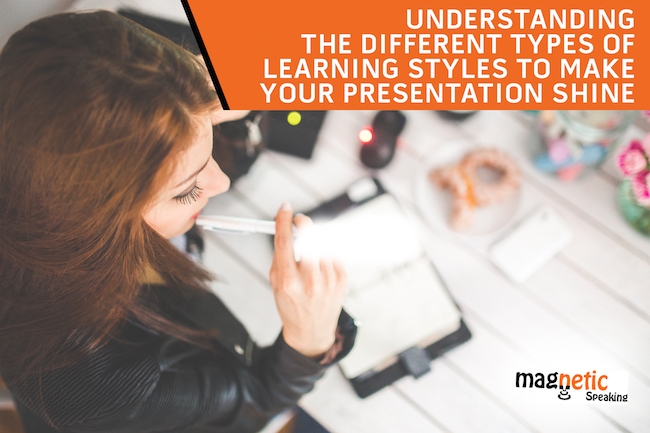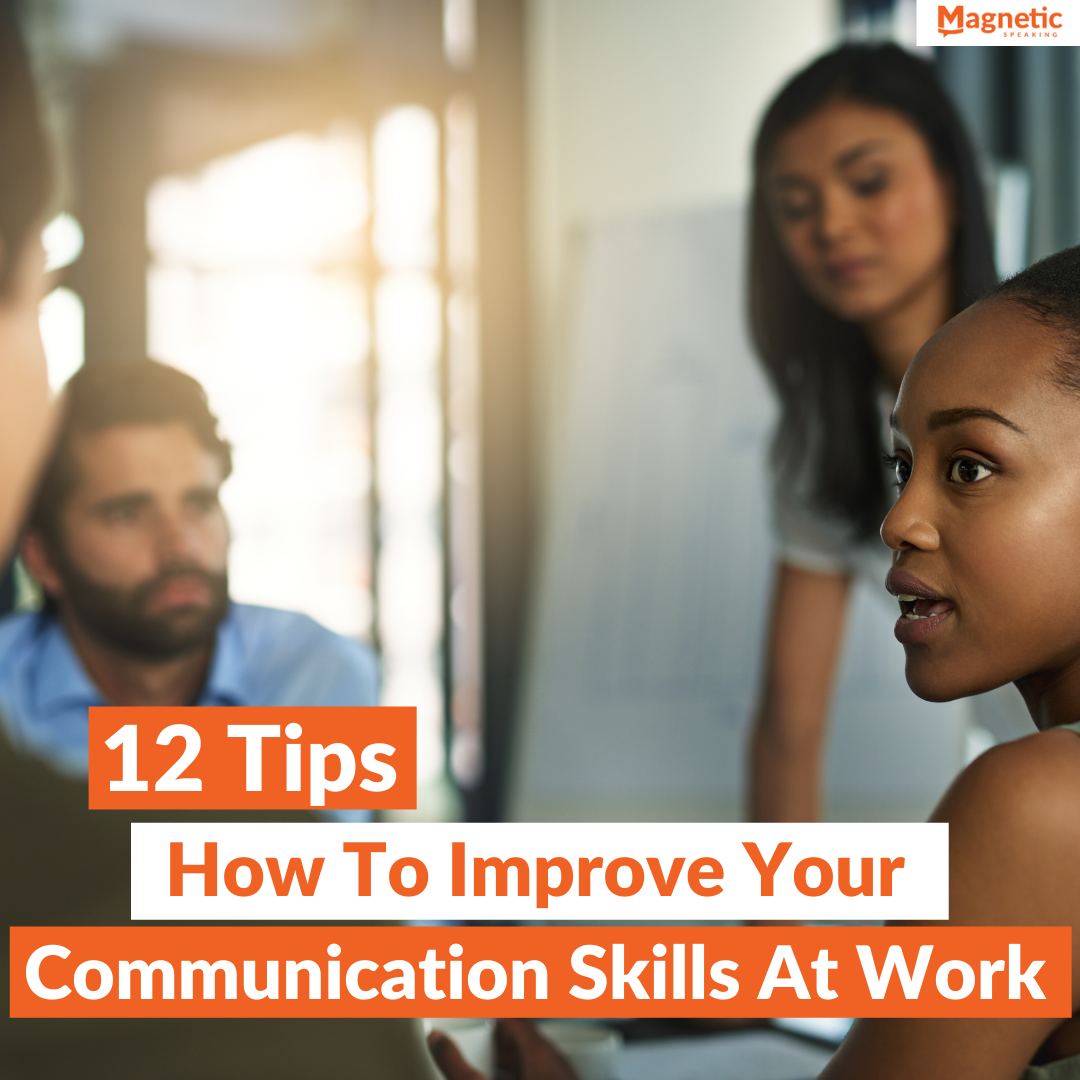Your audience is composed of different individuals with different wants, needs and also different types of learning.
To be influential, persuasive and engaging, you need to be at least aware of these differences.
So, what is learning?
A long time ago, the word “learning” was understood by many as acquiring and gaining a mental or physical grasp of a subject, giving it a meaningful interpretation and applying it in your day-to-day activities.
Today, however, researchers and educators see learning as a more dynamic system due to its continuous and ever-changing nature. This new approach has given rise to the postulation of the different types of learning, with the most popular being the VARK model.
Recently, I was confronted with the question of what learning means to me. While trying to figure out the of best way to answer this question many thoughts came to my mind making it difficult to respond to the question the right away.
First, I thought about the different types of learning I used when I was in school. Learning such as recording live lectures for subsequent review and making flash cards for reference purposes. Some of my teachers had connected with me. They were helpful and inspiring, and I learned a great deal from them.
Other teachers were boring and failed to spark my interest, and consequently, I didn’t learn very much from them. Some instructors had a teaching method that played into my preferred learning style while others did not.
Secondly, I thought about how my profession has influenced my learning process. The tremendous impact technology has made on my learning system, and the interactions and differences of others opinions and perspectives have served to bolster my business career by giving me additional insight.
Carefully examining these two thoughts, I realized that there is more to learning than what I experienced in college. I became acutely aware of the fact that learning is an ever continuous process which is not limited to the learning styles I engaged in back in my school age years. I also came to know that learning is individualistic; the learning styles that will work for me may not work for you.
Eventually, I arrived at a reasonable conclusion and came up with a solid definition of learning based on my personal experience. Learning is a process whereby you creatively engage your interests, desires, talents, skills, and experiences in life to successfully execute a plan, broaden your horizons, make discoveries, work towards your goals, and meet specific needs.
Now, to get the best out of learning, you have to be conscious of yourself, make inquiries about the types of learning styles and adopt the one that best suits you.
Understanding the Different Types of Learning Styles to Make your Presentation Shine.
It has been proven that the one-size-fits-all approach does not work with learning. Because everyone learns differently, and this is why you need to acquaint yourself with the various types of learning. Knowing yourself and your strengths and weakness will give you the needed tips on how to give an effective presentation that will get your message across to your audience.
Based on my personal experience and some references from reliable sources, I have listed the major learning styles applicable to different types of learners that will allow you to address your unique needs.
1. Visual Learning Style

One of the most universally useful learning styles. As the name implies, it involves the use of visual guides to aid learning. Visual learners assimilate, comprehend, and recollect information better when depicted and represented visually to corroborate their verbal representation. To engage visual learners in active learning and to deliver an effective presentation to a visual learner, your strategy should involve making graphic illustrations and showing them visually pleasing materials like pictures, images, labeled diagrams, graphs, colors, charts, mind maps, etc.
2. Aural or Auditory Learning Style
Learners that fall into this category understand new content faster and better by hearing it or reciting it out loud to verbalize the information. They easily have a mental grasp of spoken guidelines and instructions.
To ensure that your message is well-understood among the audience of aural or auditory learners, your presentation strategy should involve the use of sound, recordings, music, clever rhymes, and mnemonic devices. You should not only encourage them to contribute verbally but also create an avenue that will allow them to repeat your points by asking questions that will require audience answer.
3. Reading and Writing Learning Style
This learning style is arguably the most embraced style among all the different types of learners. Reading and writing learners possess strong reading and writing skills. They gain knowledge faster and understand the new content better by reading and also writing about it by taking notes.
To ensure you are on the same page with your audience, deliver your presentations in a textual format such as manuals, handouts, outlines, flyers, essays, reports, assignments, etc. You can also briefly markup and write out the keywords of your pictorial PowerPoint presentation in a list form, then distribute it to your audience which will give the audience the chance to read along with your presentation so they can better absorb your message.
4. Kinesthetic or Physical Learning Style
This type of learning style involves actively engaging and interacting with the subject matter to learn new things and acquire knowledge. Kinesthetic learners learn experientially by touching or doing something with their hands. They enjoy solving real life problem, and they like experimenting with various methods of doing something until they find the most successful method.
To get your Kinesthetic audience to connect to your messages, you must give them a chance to be physically involved as often as possible. Use real-life examples and case studies so that they can physically acquaint themselves. Demonstrate a concept that will prompt your Kinesthetic audience to stand up and move around while trying to practice on their own. Assign roles, either independently or pair them with another person, that will give them hands-on experiences while practicing and demonstrating the learned skills and behaviors.
5. Interpersonal Learning Style
This type of learning styles can also be referred to as Social learning style. People in this category learn best in groups or with other people. They enjoy sharing stories and comparing ideas.
To make your presentation resonate with Interpersonal learners, divide them into study groups and ask them to practice previously learned lessons together.
6. Intrapersonal Learning Style
Otherwise known as Solitary learning style, people with this type of learning prefer self-study and personal development. Solitary learners are self-driven and self-motivated. They follow their hearts and work based on their values and beliefs.
To facilitate smooth communication and presentation of your ideas, you only need to challenge intrapersonal learners on the subject matter and allow them to work in their preferred learning style. They will conveniently handle the rest on their own with little or no supervision.
8. Multimodality
People who possess more than one learning style fall into this category. A multimodal learner tends to have two or more active learning preferences. They are very flexible, and they can quickly switch from one learning style to another to suit the learning situation.
Multimodal learners will benefit from a variety of communication methods, so be sure to use a mixture of words, images, vocalizations and physical activities to engage them in your presentations.





